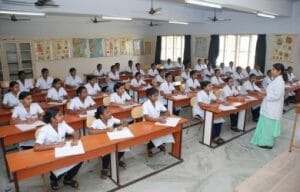
Handouts have been a primary tool to help students learn and understand class content in lectures better. Some lecturers, however, do not provide handouts to students. Currently, little research has studied the disadvantages of lectures without handouts. We, therefore, aim to survey medical student opinions and behaviors in lectures with handouts comparing to lectures without.
Methods: A cross-sectional study using questionnaires was conducted on first to fifth year medical students at the Faculty of Medicine, Chulalongkorn University.
Results: Study response rate was 89.5%. Less concentration in lectures without handouts was reported at 83.6%. Note-taking decreased 38.3% from 89.7% to 51.4% (p50.001) with a statistically significant increase of class-skipping behavior.
Absence of handouts also resulted in a rise in photocopying peer lecture notes but had no significance increase in either self-directed or peer learning. There was no association between student grade point average and handout attitudes.
Conclusions: Handouts are essential in lectures for medical students. Taking them away could immensely reduce student capability to concentrate and understand dynamic lectures. Providing handouts does not spoon-feed students with information. Rather, handouts help offer qualitative improvements to lectures.
Practice points
- The absence of handouts in lecture has negative impacts on student learning.
- Clinical students are slightly less handout-dependent than pre-clinical students.
- Most students will not employ more self-directed learning when handouts are not provided. They will search for photocopies of complete peer lecture notes.
- There is no statistically significant correlation between student GPA and their attitudes towards handouts.

Be the first to comment